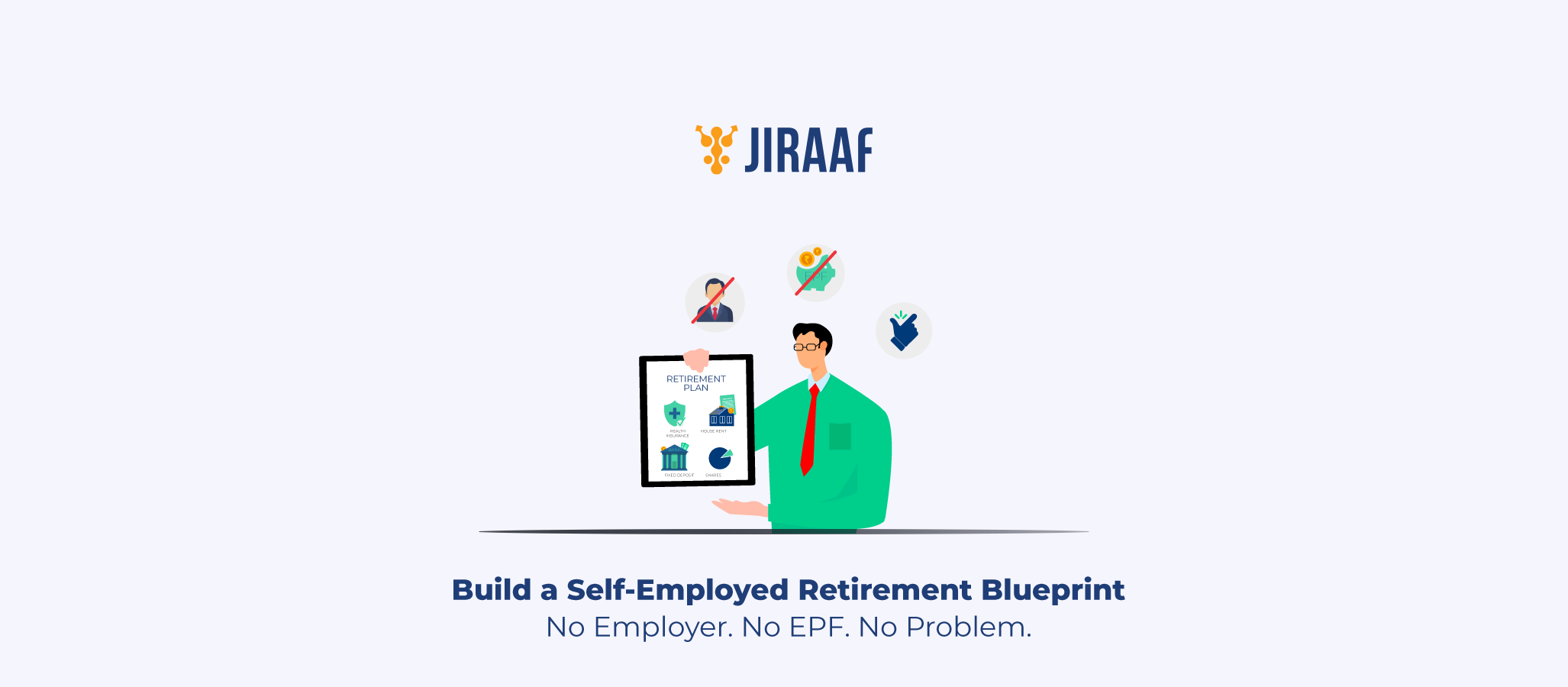Imagine you have just planted a seed in your garden. With proper care and the right conditions, that seed will grow into a flourishing plant over time. Just like nurturing a plant requires understanding the right balance of sunlight and water, investing your money wisely involves knowing how to track and optimise your returns. In this blog, we will explain how XIRR – a valuable tool that helps you monitor your investments and ensure your money is growing just as you envisioned, works.
Want to know how is XIRR calculated manually, and how you can easily calculate XIRR in Excel among other things? Keep reading to learn everything about XIRR.
What is XIRR?
Extended Internal Rate of Return or XIRR, is a financial metric used to calculate the annualised return on investments that involve multiple cash flows occurring at irregular intervals. Unlike the standard internal rate of return (IRR), which assumes cash flows happen at regular intervals, XIRR considers the exact timing of each cash flow. This makes it particularly useful for evaluating investments like mutual funds or stocks where you may make contributions or withdrawals at different times.
Why is XIRR Important for Investors?
XIRR is a powerful tool for investors because it offers an accurate and nuanced understanding of how investments perform, particularly when cash flows are irregular.
- Accurate Performance Measurement
XIRR provides a precise measure of investment performance by accounting for both the timing and size of cash flows. Unlike the average annual return, which assumes investments are made at regular intervals, XIRR considers the exact dates of cash inflows and outflows, offering a true reflection of actual returns. This is particularly useful for portfolios with multiple investments or withdrawals over time, as it ensures an accurate assessment of how well investments have performed. - Enhanced Decision Making
XIRR empowers you to make informed, strategic decisions by providing a clear picture of each investment’s annualised return. You can better evaluate which assets are performing well and which are underperforming, even if your nominal returns seem high. This insight is critical for comparing different investments, reallocating resources, and adjusting strategies to optimise returns. - Real-time Assessment
XIRR also allows for real-time evaluation of investment performance as cash flows change. Whether you are adding funds to a portfolio or making withdrawals, XIRR can immediately reflect how these changes impact overall returns. This dynamic assessment is especially beneficial in fast-moving markets, enabling investors to quickly respond to new opportunities or market movements.
How to Calculate XIRR Manually?
Step 1: Prepare Cash Flows and Dates
- List all cash flows and their corresponding dates in two columns. Ensure that the first cash flow is negative (representing an investment)
Example:
| Date | Cash Flow |
| 01-Jan-23 | -₹10,000 (Outflow) |
| 30-Jun-23 | ₹2,000 |
| 31-Dec-23 | ₹5,000 |
Step 2: Initial Guess
- Start with an initial guess for the rate of return (commonly 10%)
Step 3: Calculate NPV
- Use the NPV formula iteratively to find the rate that makes the NPV equal to zero. Adjust the rate r based on whether NPV is positive or negative
Formula:
NPV = ∑ Ct/(1+r)t
Where,
- NPV is the net present value of cash flows
- Ct is the cash flow at time (t)
- r is the rate of return (initial guess)
- t is the time period in years
The goal is to find the rate r that makes the NPV equal to zero:
0 = ∑ Ct/(1+r)t
Example – How to Calculate XIRR:
Calculation of NPV with Initial Guess of 10%
- For Cash Flow on 01-Jan-23 (t = 0):
NPV1 = -10,000 / (1+0.10)0 = -10,000
- For Cash Flow on 30-Jun-23 (t = 0.5):
NPV2 = 2,000/(1+0.10)0.5
= 2,000/1.0488
≈ 1,907.73
- For Cash Flow on 31-Dec-23 (t = 1):
NPV3 = 5,000/(1+0.10)1
= 5,000/1.10
≈ 4,545.45
Total NPV Calculation
Now, sum these NPVs:
Total NPV = NPV1 + NPV2 + NPV3
Total NPV = −10,000 + 1,907.73 + 4,545.45 ≈−3,546.82
Iterate:
- Adjust your guess rate r until you find a rate that results in an NPV equal to zero. Since the Total NPV in this case is negative (-₹3,546.82), we need to increase our guess for r
While manual calculation of XIRR can be complex, tedious, and time-consuming due to iterative adjustments, using Excel’s built-in XIRR function simplifies this process significantly by automating calculations based on your input cash flows and dates. This makes it easier to analyse investments with irregular cash flows effectively.
How to Calculate XIRR in Excel?
To calculate XIRR in Excel, you need to use a simple formula in the sheet. Below is a detailed explanation of how it works:
| 1 | (A) Cash Flow | (B) Date |
| 2 | -10,000 | 01/01/2023 |
| 3 | -5,000 | 01/07/2023 |
| 4 | 3,000 | 01/01/2024 |
| 5 | 8,000 | 01/07/2024 |
Steps to Calculate XIRR in Excel:
1. Input the Data:
Ensure your dates are in one column and the corresponding cash flows in the adjacent column
For example, in cells: A1 for cash flows and B1 for dates
2. Use the XIRR Function:
In a new cell, enter the formula:
=XIRR(A2:A5, B2:B5)
Here, A2:A5 refers to your cash flow range and B2:B5 to your date range. The guess parameter is optional and can be omitted.
3. Calculate XIRR:
Press ‘Enter’ to compute the XIRR. The result will show the annualized internal rate of return based on your cash flows and their respective dates.
P.S. (for Excel):
- Ensure that your cash flow values include at least one positive and one negative value; otherwise, Excel will return an error
- Dates do not need to be in chronological order but must be valid Excel dates
Common Mistakes to Avoid While You Calculate XIRR
1. Incorrect Cash Flow Entries
Entering cash flows incorrectly, such as mixing up inflows (positive values) and outflows (negative values)
2. Ignoring the Exact Dates
Not using the actual dates when cash flows occur, which leads to imprecise results
3. Using XIRR for Regular Cash Flows
Using XIRR when cash flows are regular and could be more accurately measured using IRR or CAGR
4. Not Adjusting for Fees and Taxes
Ignoring fees, taxes, or transaction costs when calculating returns, leading to an inflated XIRR
5. Misinterpreting the Results
Misunderstanding that XIRR represents an annualised return and not the total return over the period
Conclusion: XIRR Calculation
In summary, mastering how to calculate XIRR equips you with a robust method for evaluating your investment performance amidst fluctuating cash flows. By understanding the intricacies of this financial metric, you can refine your investment strategies and enhance your decision-making process. This knowledge not only empowers you to measure your returns more accurately but also helps you identify opportunities for growth. With a strong grasp of XIRR, you can confidently navigate the complexities of investment management and achieve your financial aspirations.
Discover fixed income investments with Jiraaf, a SEBI registered online bonds platform that educates and brings access to a wide array of bonds. Sign up today to explore diversified fixed income investment opportunities to support your goal-based wealth creation journey. Start investing!




